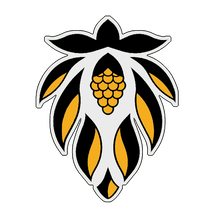|
I came across an interesting discussion the other day, whose topic was -Why are German beers so different from their American counterparts? Short answer : Reinheitsgebot! (sneeze!) Reinheitsgebot is one of the first and oldest consumer protection laws ever passed. It is usually referred to as the German beer purity law and was first proposed in 1487 (no typo!) and passed into law in the year of our Lord 1516. It simply stated that it was illegal to put anything except water, barley, and hops into beer. It was updated and amended into the Provisional German Beer Law which allowed the additions of yeast, wheat malt, and sugar cane (but banned unmalted barley). Hops were specifically mentioned in Reinheitsgebot not only for adding flavor but also acting as a preservative. Medieval brewers did not have the preservative thing down pat and were killing their fellows by adding stuff like chimney soot, poisonous mushrooms, and various herbs to their brews in an effort to preserve the beer. These additions to brewing are now called "adjuncts". ( I always remember it as "Added JUNK".) The German purity law basically says that if you add other junk to your brew; you cannot label and sell it as real beer. These provisions are still adhered to today by many brewers- but not all.
In America; where bigger, faster, and cheaper are king - the use of adjuncts is the norm. Large brewers use large amounts of corn and rice (among lots of other things like artificial flavoring, corn syrup, colors ,dyes, juices, extracts, etc.) in an effort to produce the most beer for the lowest cost. They use just enough of the Reinheitsgebot ingredients to flavor their brews without having to re-label it a malt liquor. ( Malt liquors are completely based on the fermentation of corn and rice.) So, the next time you tip a Bud or a Coors against an imported German Pilsner, realize you are actually comparing a near malt liquor (flavored to taste like beer) to the real thing. Kinda like comparing a can of Spaghettios to real Italian spaghetti . . . Which leads to twisted thinking like- If you were born and raised only on spaghettios; are they now better than the "real" thing? (Ponder that over a pitcher, or two.) But you do have to respect the big brewers for being able to pull off a brew that is almost entirely water and still have a 3.5 to 5.5 % alcohol content. Amazing! Thank goodness that the craft brewers have re-discovered Reinheitsgebot and its brewing principals. Brew on! |
Details
Blog AuthorLynn, the head hop grower at Great Lakes Hops has over 30 years of experience in the horticultural field. Browse the blog articles here to find useful growing information for humulus lupulus, based on personal experience and observations at Great Lakes Hops. Archives
January 2020
Categories
All
|


 RSS Feed
RSS Feed